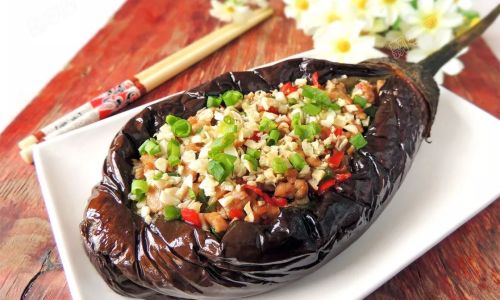Roasting eggplants, or aubergines as they are known in some parts of the world, transforms their texture and flavor in a way that brings out their natural sweetness and creates a delightful, caramelized exterior. This simple cooking technique can elevate eggplants to a gourmet level, making them a star ingredient in various dishes from appetizers to main courses. Whether you’re preparing for a family dinner, hosting a dinner party, or just looking to add some variety to your weeknight meals, learning how to roast eggplants perfectly is a skill worth mastering. In this guide, we’ll walk you through the entire process, from selecting the right eggplants to serving them up in delicious recipes.

Choosing the Right Eggplants
Before you begin roasting, it’s crucial to start with high-quality eggplants. Here are a few tips to help you pick the best ones:
- Color: Depending on the variety, eggplants can range from deep purple to green to white. Regardless of the color, look for a uniform hue without spots or blemishes.
- Firmness: An ripe eggplant should feel firm to the touch. Avoid any that are soft or have bruises.
- Size: While size can vary, generally, smaller to medium-sized eggplants tend to have a better flavor and texture.
- Stem: Fresh eggplants will have a green, sturdy stem attached. If the stem is dry or brown, the eggplant may not be as fresh.
- Weight: Heavier eggplants usually indicate that they are juicy and full of flavor.
Preparation Before Roasting
Once you’ve selected your eggplants, it’s time to prepare them for roasting. Here’s a step-by-step guide:
- Washing: Rinse the eggplants under cold running water to remove any dirt or residue. Pat them dry using a clean kitchen towel or paper towels.
- Trimming: Cut off the stem end of each eggplant. Depending on the recipe, you may also want to slice them lengthwise, halve them, or cut them into rounds. This will depend on how you plan to use the roasted eggplants.
- Scoring: If you prefer a softer interior texture, you can make a few shallow cuts or pricks on the skin of the eggplants. This allows steam to escape during roasting and can help with even cooking.
- Salting (Optional): Some recipes recommend salting the eggplants and letting them sit for a while to draw out excess moisture. While this isn’t necessary, it can help achieve a firmer texture after roasting. Rinse off the salt and pat the eggplants dry before proceeding.
Roasting Techniques
There are several methods you can use to roast eggplants, each yielding slightly different results. Here are the most common techniques:
-
Oven Roasting:

- Preheat: Preheat your oven to 400°F (200°C).
- Oiling: Lightly coat the eggplants with olive oil or another preferred cooking oil. This helps with browning and adds flavor.
- Arrangement: Place the eggplants on a baking sheet lined with parchment paper or aluminum foil for easier cleanup. Make sure they are not overcrowded to ensure even roasting.
- Roasting Time: Roast for about 25-40 minutes, depending on the size and thickness of the eggplants. They should be tender when pierced with a fork and have a nice caramelized exterior.
- Turning: For even roasting, you may want to turn the eggplants halfway through the cooking time.
-
Grill Roasting:
- Preheat: Preheat your grill to medium-high heat.
- Oiling: As with oven roasting, lightly coat the eggplants with oil.
- Grilling: Place the eggplants directly on the grill grates. Cover the grill and cook for about 10-15 minutes per side, or until they are tender and have nice grill marks.
- Basting (Optional): You can baste the eggplants with additional oil or a flavorful sauce during grilling to enhance their taste.
-
Stovetop Roasting:
- Heat: Place a large, heavy-bottomed skillet over medium-high heat.
- Oiling: Add a small amount of oil to the skillet and heat it up.
- Cooking: Add the eggplants in a single layer, making sure they are not overcrowded. Cook for about 5-7 minutes per side, or until they are tender and browned.
- Turning: Carefully turn the eggplants with tongs to avoid burning.
Checking for Doneness
Determining when your eggplants are done can vary slightly based on your preferred texture and the roasting method you’ve chosen. Here are a few signs to look for:
- Color: The skin should be deeply caramelized and have a nice glossy appearance.
- Texture: When pierced with a fork, the flesh should be tender but not mushy.
- Shrinkage: Roasted eggplants will shrink slightly in size as they lose moisture.
- Smell: They should have a fragrant, roasted aroma.
Seasoning and Serving
Once your eggplants are roasted to perfection, it’s time to season and serve them. Here are some delicious ideas:

- Simple Seasoning: Drizzle with extra virgin olive oil, sprinkle with sea salt, and add a pinch of freshly ground black pepper.
- Herbs: Fresh herbs like parsley, thyme, or rosemary can be added for a burst of flavor.
- Garlic: Rubbing the roasted eggplants with a clove of garlic can add an extra layer of taste.
- Lemon Zest and Juice: A squeeze of fresh lemon juice and a sprinkle of lemon zest can brighten up their flavor.
- Tahini Sauce: For a Middle Eastern twist, serve them with a creamy tahini sauce.
- Baba Ganoush: Blend roasted eggplants with garlic, lemon juice, tahini, yogurt, and spices to make a delicious dip.
- Caponata: Combine roasted eggplants with tomatoes, olives, capers, onions, and vinegar for a rich, savory relish.
- Salads: Chop roasted eggplants and mix them into salads with cherry tomatoes, cucumbers, feta cheese, and a light vinaigrette.
- Pastas: Puree roasted eggplants and toss them with pasta, adding ricotta cheese, garlic, and fresh basil for a luxurious dish.
Storage and Leftovers
If you have leftover roasted eggplants, you can store them in an airtight container in the refrigerator for up to 3 days. Here are a few ways to use them up:
- Sandwiches: Slice and add to sandwiches or wraps with hummus, lettuce, and tomatoes.
- Omelets: Chop and incorporate into omelets or scrambled eggs.
- Soups: Blend them into soups for added creaminess and flavor.
- Pizza Toppings: Use them as a pizza topping along with mozzarella, tomatoes, and basil.
Troubleshooting Common Issues
Even with the best intentions, things can sometimes go awry when roasting eggplants. Here are some common issues and how to fix them:
- Soggy Interior: Ensure the eggplants are not overcrowded on the baking sheet or grill. This allows for better air circulation and more even roasting.
- Burnt Exterior: If the exterior is burning but the interior is still tough, reduce the heat and cover the eggplants loosely with aluminum foil for the last few minutes of cooking.
- Bitter Taste: Some varieties of eggplants can be bitter. Roasting helps mitigate this, but if you’re still experiencing bitterness, try soaking the sliced eggplants in salted water for 30 minutes before roasting.
Conclusion
Roasting eggplants is a simple yet transformative cooking technique that brings out their natural sweetness and creates a delightful, caramelized exterior. By following the steps outlined in this guide, from selecting the right eggplants to mastering various roasting techniques and seasoning them perfectly, you can elevate this humble vegetable to gourmet status. Whether you’re serving them as a side dish, incorporating them into a main course, or using them as a base for dips and spreads, roasted eggplants are sure to impress. Happy cooking!





0 comments